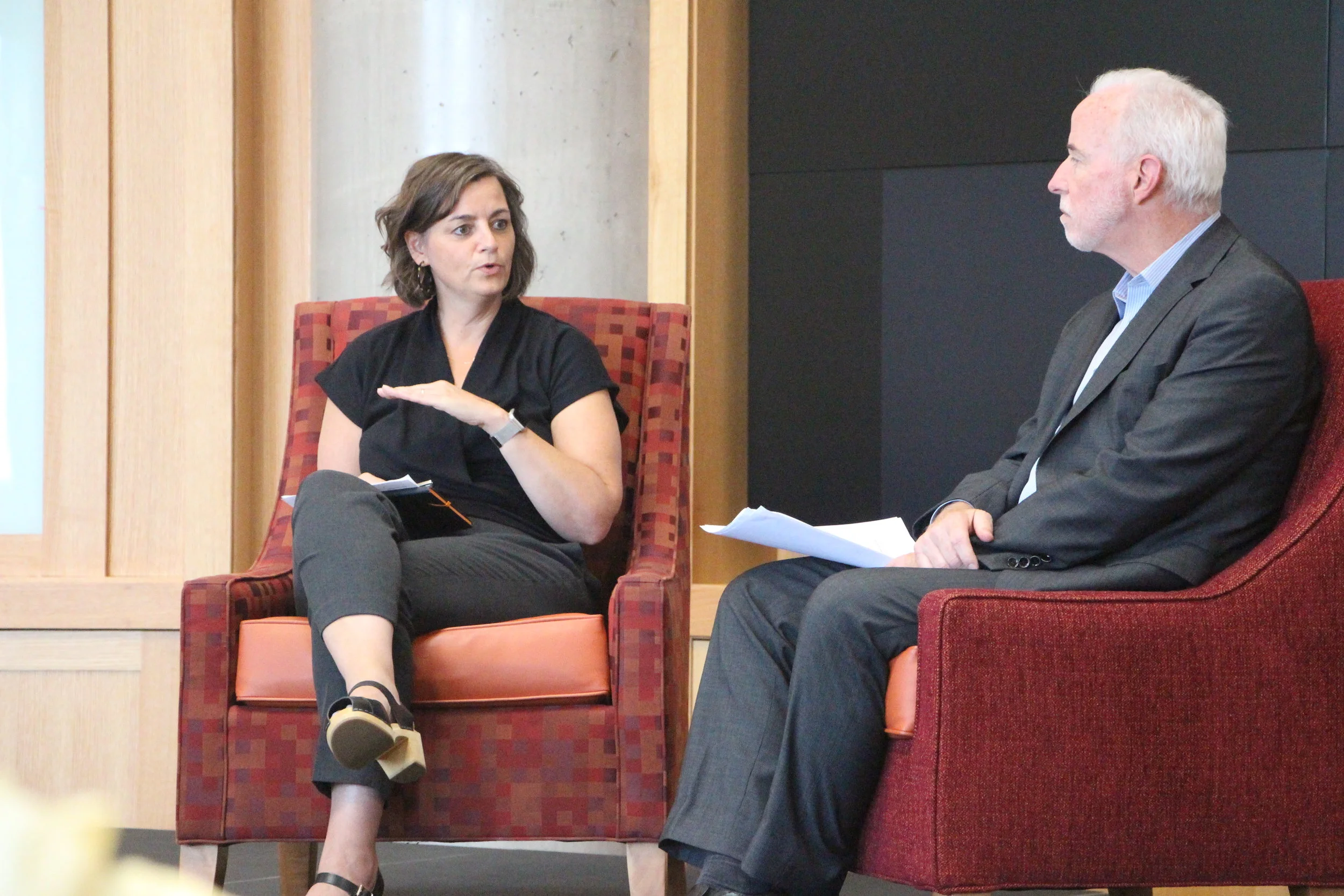Takeaways from the Colorado Media Project’s community conversation with Molly de Aguiar
By Andrew Elliman
Published: Aug. 24, 2018
How can local journalists better connect with their audiences and serve their communities? This has emerged as a central question for the Colorado Media Project, and the focus of countless hours of interviews with journalists and news consumers throughout the state. Through more than a decade of working on precisely this problem, Molly de Aguiar -- Managing Director of the international News Integrity Initiative and former media grantmaker for New Jersey’s Geraldine R. Dodge Foundation -- has found the solutions to be simple in theory, yet difficult in application.
Naturally, like finding the answer to any question, it all starts with listening. In that spirit, a packed audience of civic leaders and concerned citizens gathered at Denver University’s Ritchie School of Engineering and Computer Science on August 22, to hear de Aguiar share her insights on building trust in media, and strengthening local news ecosystems. A panel discussion followed with Laura Frank (Vice President of Journalism for Rocky Mountain PBS), Eric Gorski (Managing Editor for Local News at Chalkbeat) and Roxane White (Project Director of the Colorado Media Project), to discuss forward-thinking challenges confronting local journalism. The conversation was moderated by Tom Gougeon, president of the Gates Family Foundation, which supports a number of Colorado’s nonprofit news outlets and worked with JB Holston at DU to help launch the Colorado Media Project this summer.
“In 2018, good journalism won’t be enough.” This notion -- that local journalists can and must do more to connect with and work on behalf of the publics they represent -- forms the foundation for de Aguiar’s work as Managing Director of the News Integrity Initiative at the CUNY Graduate School of Journalism (and her predictions for journalism in 2018, written for NiemanLab). Through her current role as leader of a global coalition of media funders, journalists, nonprofits, academics and other stakeholders, and with insights gleaned from her prior decade as local news grantmaker for Dodge, de Aguiar brings a unique perspective into what it truly takes to build engaged communities.
Audience members at Aug. 22 public forum with Molly de Aguiar of the News Integrity Initiative.
Primarily, de Aguiar spoke of a widening emotional disconnect between local journalists and the communities they cover.
On the one side, well-intentioned writers and broadcasters may feel that if they just keep their heads down and do the good work of journalism, audiences will eventually come around. (And if they don’t, well then that’s on them.) On the other side, their disenchanted readers, listeners and viewers -- who don’t feel visible or heard in the media -- often report feeling that local news content isn’t relevant because it doesn’t help them make important decisions in their lives. Or even worse, that it makes them feel hopeless in their situations. De Aguiar shared that in dozens of community listening sessions she has attended in cities, towns, and rural areas across the country, the latter sentiment is expressed disproportionately by people of color.
When listening to the public about what they want and need in news coverage, de Aguiar has uncovered insights that often contradict traditionally-held beliefs about how to engage audiences in local markets. For example the old standby, “if it bleeds it leads” is misleading. Though in the short term audiences may tune in or click, at a deeper level people report they don’t want to be inundated with daily reports of crime and death in their cities and towns. This tactic may even drive them away before long. Local government and policy coverage is another example of the audience disconnect. While journalists often feel a sense of urgency and importance covering the ins and outs of local school boards and city councils, this daily coverage seldom explains how power actually works, why policies matter, and how the decisions impact the day-to-day lives of average people.
Through the News Integrity Initiative, Molly and her colleagues have developed tools, models, and training for journalists to glean these and other insights from their audiences, forge collaborative relationships within their communities, and facilitate a more constructive civic dialogue. She warned that transitioning to this new model of more open, community-based journalism will be a marathon, not a sprint. With any hard journey, as the proverb says: “If you want to go fast, go alone. If you want to go far, go together.”
To that end, Molly has devoted much professional energy to fostering collaboration among journalism ecosystems. In her previous capacity representing the Dodge Foundation in New Jersey -- a state which has often scraped by on spotty news coverage due to its position between two major media markets, Philadelphia and New York City -- de Aguiar leveraged Dodge’s resources to help found the Center for Cooperative Media at Montclair State University. Serving as a hub for journalism in the Garden State, the Center provides services, support, and guidance to help local newsrooms adapt to the harsh realities of the new media landscape, and serves as a hub for collaboration between newsrooms.
Roxane White (Colorado Media Project), Eric Gorski (Chalkbeat), and Laura Frank (Rocky Mountain PBS) converse with special guest Molly de Aguiar (News Integrity Initiative) and moderator Tom Gougeon (Gates Family Foundation) at an Aug. 22 public forum held at Denver University.
Back west in the Centennial State, Frank joined de Aguiar on stage to share how Rocky Mountain PBS envisions a similar home base for journalism in its planned Buell Center for Public Media in downtown Denver. Rocky Mountain PBS is looking into sharing space in their new facility with other local news producers, and other ways to develop shared tools for the Colorado Community. The project is something that she believes has the potential to provide Colorado newsrooms, in her words, “a foundation that other organizations could build solidly from.”
Picking up on the theme of audience engagement, Gorski shared efforts at Chalkbeat to better engage with its readers, namely hosting listening tours in its various markets to ask them first-hand: What do they want in their education reporting? In Chicago, readers kept saying they were sick of hearing about how screwed up things always seem to be, and were desperate for some good news for a change. Acting on that feedback, Chalkbeat created a “High Five” feature on the website, highlighting a positive story every day. And what do you know, it was a hit. “People don’t just want a tote bag,” Eric said. “They want to be a part of something.”
While sharing to gain will no doubt be a crucial component, sustainable journalism will also require a more diversified business model. Between advertisers, subscribers, and other revenue streams, de Aguiar pointed out there is no one-size-fits-all approach to financing. However, drawing on her experiences at the Dodge Foundation and other nonprofits, she shared how philanthropy is becoming an increasingly vital source of funding in the media space -- particularly in the areas of innovation and collaboration.
Still, Frank pointed out how just as career reporters can be squeamish about soliciting donations, there is also a learning curve on the side of nonprofits investing in journalism. Gorski agreed, and revealed how Chalkbeat’s single-issue focus on education has helped to convince potential funders to take the leap. The pitch? If your organization cares about education, or for that matter medicine, the arts or any other passion point, then you should care just as much about the way it’s portrayed in the media.
Despite the many challenges ahead, de Aguiar and her co-panelists remained optimistic about the future of local journalism. Whatever may be broken between journalists and their communities, de Aguiar has seen proof that it’s fixable. There exists an opportunity to build enduring trust, especially through collaboration, that has the potential to be underwritten to a larger extent by philanthropic support.
Echoing their enthusiasm, White joined in the discussion to share the latest learning from the Colorado Media Project. As the project director, she has overseen a comprehensive outreach process, surveying thousands of Coloradans about what’s missing in local news. Perhaps not surprisingly, throughout the I-70 corridor, White and her team heard the same calls for more relevant and meaningful news coverage that de Aguiar relayed back from the New Jersey Turnpike.
With support from the Gates Family Foundation and other local funders, digital media prototyping from Cultivo, and business model analyses from the Boston Consulting Group, the Colorado Media Project is working to synthesize these pain points from both journalists and audiences into potential solutions for sustainable local journalism.
For a full report on what we’ve learned, please join us on September 24 back on the DU campus for our wrap-up community forum. RSVP here today. We look forward to seeing you there!
Our sincerest thanks to Molly de Aguiar for sharing her knowledge and experience. Also to Laura Frank, Eric Gorski, Roxane White, and Tom Gougeon for their participation at this event and ongoing community leadership. And finally to the many members of the Denver media and believers in local journalism that showed up to support the Colorado Media Project. Your passion makes all of this possible.



